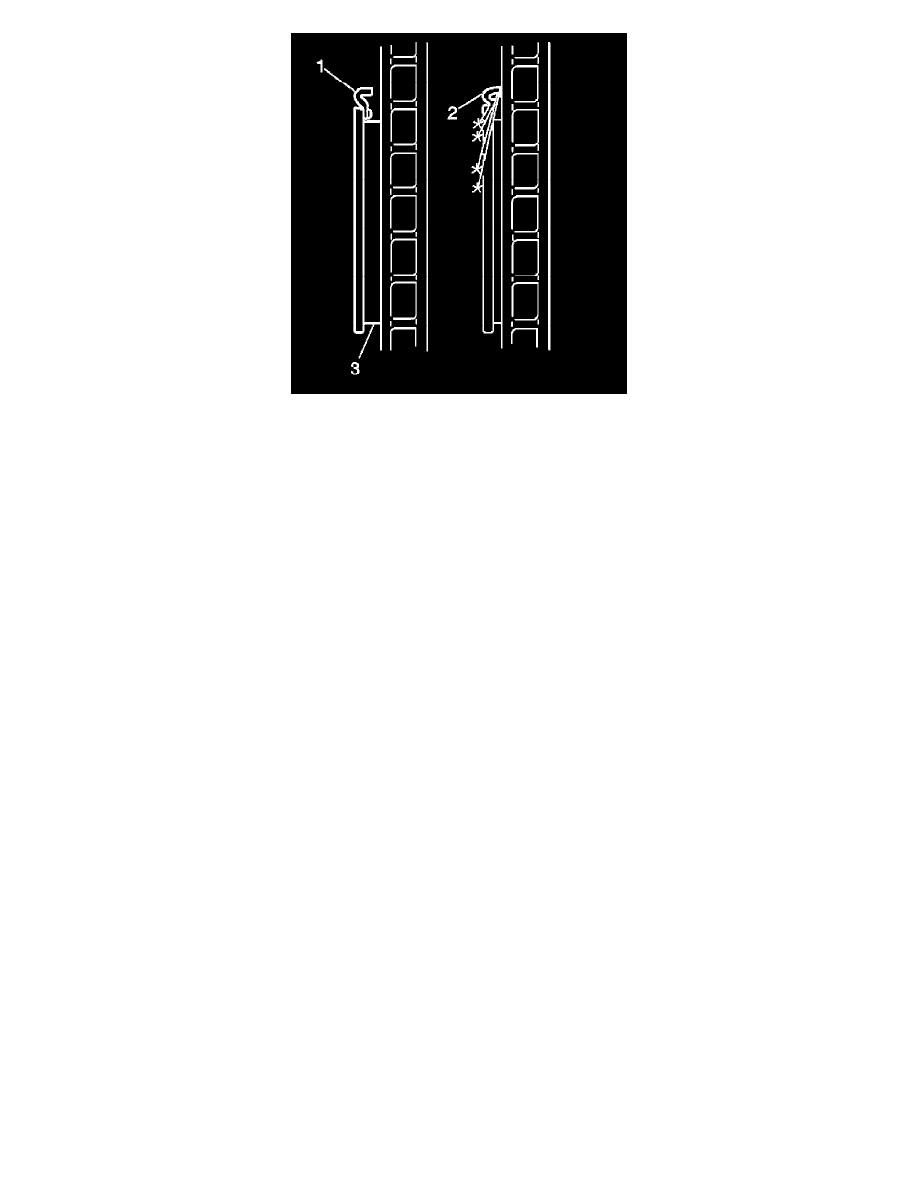XL-7 2WD V6-3.6L (2007)

WARNING: Refer to [Brake Dust Caution].
^
Inspect the disc brake pads at regular intervals, or whenever the tire and wheel assemblies are removed from the vehicle.
^
If replacement is necessary, always replace disc brake pads in axle sets.
^
Inspect both edges of the disc brake pad friction surfaces (3). The highest rate of wear normally occurs at the trailing edge of the disc brake pads.
^
Inspect the thickness of the disc brake pads (3) in order to ensure that they have not worn excessively. The disc brake pad wear should be
approximately even per axle set.
^
Both front and rear disc brake pads have integral, audible wear sensors (1). When the disc brake pad wear reaches the minimum allowable
thickness, the wear sensor contacts the disc brake rotor (2). The wear indicator will then produce an audible, high-pitched warning noise during
wheel rotation.
^
Replace the disc brake pads when the friction surface (3) is worn to within 2 mm (0.080 in) of the mounting plates.
^
Remove the brake calipers and inspect the friction surfaces of the inner and outer disc brake pads to ensure that they are level. Place the disc brake
pad friction surfaces together and measure the gap between the surfaces. If more than 0.5 mm (0.020 in) gap exists midway between the length of
the disc brake pads, replace the disc brake pads.
^
Verify that any disc brake pad shims that may be required are in place and not damaged or excessively corroded. Replace any missing or damaged
shims in order to preserve proper disc brake performance.
^
Replace the disc brake pads if any have separated from the mounting plates.
^
Inspect the disc brake pads friction surfaces for cracks, fractures, or damage which may cause noise or otherwise impair disc brake performance.
^
Inspect the noise insulators on the brake pad mounting plate. Replace the brake pads if the noise insulators have separated from the brake pad
mounting plate.
Brake Pad and Rotor Burnishing
WARNING: Road test a vehicle under safe conditions and while obeying all traffic laws. Do not attempt any maneuvers that could
jeopardize vehicle control. Failure to adhere to these precautions could lead to serious personal injury and vehicle damage.
WARNING: Refer to [Brake Dust Caution].
Burnishing the brake pads and brake rotors is necessary in order to ensure that the braking surfaces are properly prepared after service has been
performed on the disc brake system.
This procedure should be performed whenever the disc brake rotors have been refinished or replaced, and/or whenever the disc brake pads have been
replaced.
1. Select a smooth road with little or no traffic.
2. Accelerate the vehicle to 48 km/h (30 mph).
NOTE: Use care to avoid overheating the brakes while performing this step.
3. Using moderate to firm pressure, apply the brakes to bring the vehicle to a stop. Do not allow the brakes to lock.
4. Repeat steps 2 and 3 until approximately 20 stops have been completed. Allow sufficient cooling periods between stops in order to properly
burnish the brake pads and rotors.
